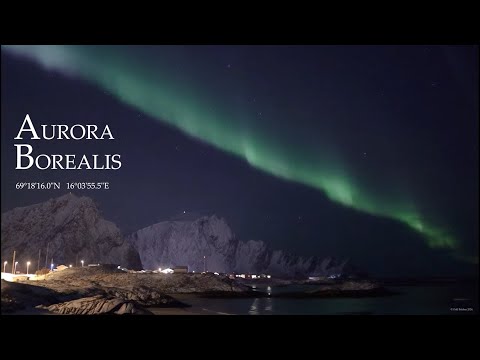The Enchanting Aurora Borealis: Nature’s Light Show

Introduction
The aurora borealis, commonly known as the northern lights, is a mesmerizing natural phenomenon that captivates millions each year. This spectacular display of shimmering lights, mostly seen in high latitude regions near the Arctic and Antarctic circles, holds great importance not only in terms of natural beauty but also in scientific research and cultural significance. As climate patterns shift due to global warming, understanding the aurora’s behavior becomes increasingly relevant in our studies of the Earth’s atmosphere.
The Science Behind the Aurora Borealis
The aurora borealis occurs when charged particles from the sun interact with the Earth’s magnetic field and atmosphere. This interaction generates beautiful, dynamic displays of light across the night sky, typically in shades of green, pink, red, yellow, blue, and violet. November to March is generally the prime time for witnessing this phenomenon, particularly in regions like Canada, Alaska, Norway, and Sweden.
Scientists have observed that the intensity and frequency of auroras can be influenced by solar activity, particularly during solar storms. The recent solar maximum, which peaked in 2021, has brought increased visibility of the northern lights, with forecasts predicting continued strong activity as we enter a new solar cycle.
Current Aurora Borealis Events
In light of recent solar activity, several particularly stunning auroras have been reported in places like Yellowknife, Northwest Territories, and Tromsø, Norway. Tourists and aurora enthusiasts flock to these regions, eager to capture the magic of the lights. Local businesses have seen a boost, as accommodations and guided tours thrive during peak viewing times.
Moreover, educational initiatives are being developed to teach attendees about the science behind the lights, allowing visitors to appreciate not only their beauty but also the physics that make them possible.
Conclusion
The aurora borealis continues to inspire awe and wonder, serving as a reminder of nature’s splendor and complexity. As the impacts of climate change become more evident, understanding these natural occurrences may also provide insights into the health of our atmosphere. For those contemplating a journey to experience the northern lights, the time has never been better. Given the ongoing solar activity and advancements in tracking technology, enthusiasts can expect breathtaking views and a deeper appreciation for one of nature’s greatest displays.








